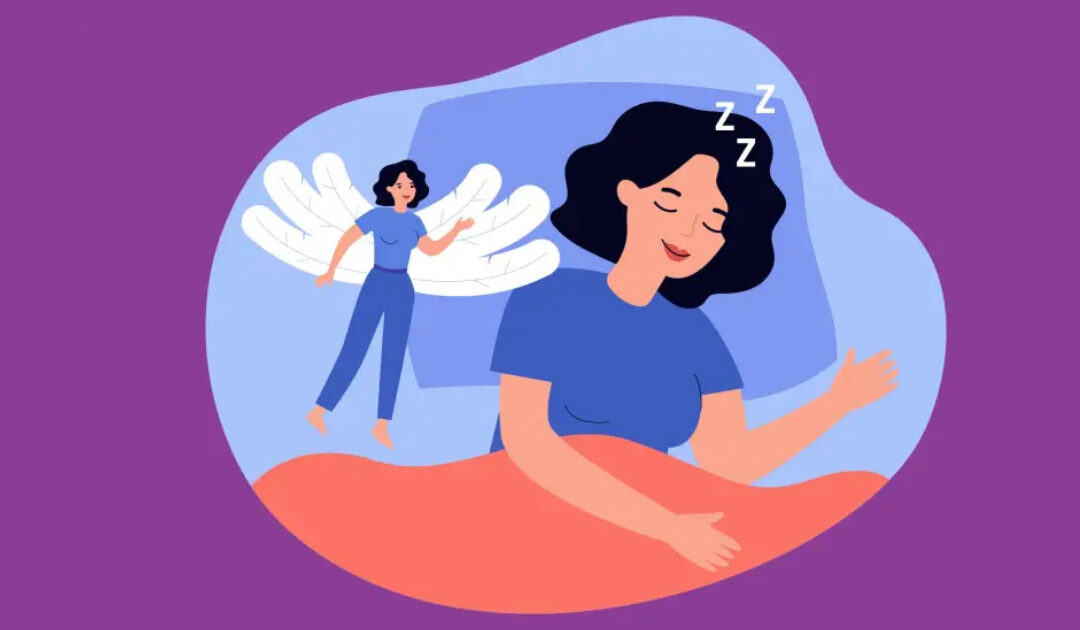The desire to exert some degree of control over one’s surrounding environment is somewhat inherent in nature. We wish to design our present and future according to our choices and aspirations. This nature might also reflect in the dreams that one perceives while being asleep. Such a heightened sense of knowledge and awareness while dreaming in the state of sleep is known as lucid dreaming. In such dreams, the dreamers can alter the storylines, images and characters in a manner that they choose. The dream content can highlight their unconscious fascinations, fears and hostilities that they experience and confront.
Researchers have extensively attempted to explore the underlying neuroscientific mechanisms of lucid dreaming to find out the particular physiological functions involved in such dreaming. It was found that lucid dreaming like normal dreams takes place during Rapid Eye Movement (REM), and has been linked to the prefrontal cortex of the brain. This region is also known to play a role in other cognitive functions like attention, consciousness and working memory. Hence, the frontal lobe as a region was theorized to have an active part in the occurrence of lucid dreaming. Further experiments have been conducted and it has been observed that lucid dreams are associated with increased physiological activation, as measured by increased phasic activity (e.g., increased REM density). Autonomic nervous system arousal (e.g., heart rate, respiration rate, and skin potential) were also found to be elevated during lucid REM sleep compared to non-lucid REM sleep (Dement et al., 1986). Additionally, lucid dreams were found to occur in REM sleep periods later in the night (Laberge et al.,1986). These findings suggest that lucid dreaming is associated with increased cortical activation which reaches its peak during phasic REM sleep.
As lucid dreaming is considered to be a function of high order consciousness, it expands one’s insight levels. The mechanism of understanding one’s own thought process, behaviours and feelings is easier for lucid dreamers as compared to non-lucid dreamers.
There are some other benefits of lucid dreaming to the human mind:
1. Enhanced Creativity: Lucid dreaming often goes beyond recognizing that you are dreaming; it can give the dreamer the power to create and control anything within the dream. Thus, it provides the dreamer with a way to explore their creative boundaries. (Vallat & Ruby, 2019). Additionally, research has found that those who lucid dream rank higher on measures of creativity and report feeling more creative as a result of the experience.
2. Relieve anxiety and limit nightmares: Research studies have also demonstrated that lucid dreaming can help reduce symptoms of anxiety of Post-Traumatic Stress Disorder (Harb et al., 2016). Certain therapeutic conversations can help decrease any distressing content that may arise during dreams and promote relaxation, and then this can be applied to the waking state (Colic, 2007). By taking control of one’s dreams, sometimes helps prevent or soften the disturbing events of a nightmare (Vallat & Ruby, 2019). As nightmares often worsen sleep quality, lucid dreaming may help lead to a healthier sleep schedule. Specifically, a 2006 pilot study revealed that lucid dreaming therapy treatment helped reduce the frequency of nightmares (Spoormaker & Van Den Bout, 2006).
3. Increased metacognition: Self-reflection and volitional control increase as a result of heightened metacognition due to lucid dreaming. It helps one to increase their self-knowledge which in turn guides them in self-regulation. It promotes ideas and boosts personal memory.
The blur between dream and reality is known to be one of the symptoms of psychosis where patients cannot differentiate between their delusions and reality. Hence, lucid dreaming stands as a risk for people with a tendency towards the development of psychotic symptoms. Series of disadvantages also include these dreamers disassociating themselves and an inclination to escape to the dream world from the real world. There are some other risks:
4. Dissociation: Lucid dreams represent a condition of the brain akin to dissociative mental states in waking, such as derealization and depersonalization. These terms are used to define subjective experiences of detachment from the environment or from one’s experience of oneself or body, respectively (American Psychiatric Association, 2000); (Simeon and Abugel,2006). In waking, dissociative thought is generally transient and can be experienced as an isolated phenomenon or within the context of several different psychiatric diagnoses (Moskowitz et al., 2005).
5. Increase Psychopathology: Despite certain studies suggesting that lucid dreaming can help reduce anxiety in the waking state, other studies have revealed the exact opposite. For example, one study found that the techniques used to induce lucid dreams might lead to a higher risk of depression and anxiety. The study also found that people who have more intense lucid dreams may experience increased symptoms of psychopathology (Aviram & Soffer-Dudek, 2018). Other research suggests that lucid dreaming could exacerbate the symptoms of borderline personality disorder by increasing dream-reality confusion (Allan, 2019).
6. Decrease Sleep Quality: Since some of the methods for inducing lucid dreams require you to wake up in the middle of the night and interrupt your sleep cycle (such as ‘wake back to bed’), this can decrease both the sleep duration and quality (Vallat & Ruby, 2019). This, in turn, can have a negative impact on one’s mental health.
Overall, it can be said that lucid dreaming is extremely controversial as well as an interesting area of research for psychologists studying sleep patterns and dream activities. However, a massive amount of details and understanding is still left to be explored about the occurrences of lucid dreaming. Self-induced lucid dreaming has grown in popularity in recent years. Even though it consists of a few risks, it is still perceived as an attractive opportunity for wish fulfilment, overcoming fears and the process of healing.
– Urveez Kakalia & Debanjana Banerjee.

